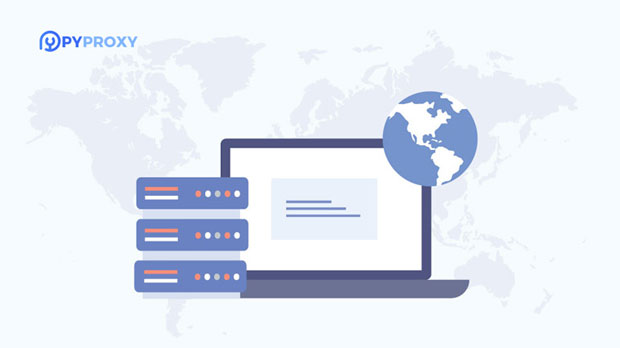Monitoring network traffic using a socks5 proxy involves capturing and analyzing the data flowing through the proxy server. socks5 proxies, known for their ability to handle various types of internet protocols, provide an effective method for network administrators and security professionals to inspect network traffic. This is particularly useful in identifying malicious activity, troubleshooting network issues, and ensuring network security. This article will delve into the detailed process of setting up and using a SOCKS5 proxy for network traffic monitoring, covering the technical steps, benefits, challenges, and practical use cases. By the end of this guide, you will understand how to effectively leverage SOCKS5 proxies for monitoring and securing network traffic. Introduction to SOCKS5 Proxy and Its Relevance for Traffic MonitoringA SOCKS5 proxy is a versatile and robust protocol designed to route network traffic between clients and servers. Unlike traditional HTTP or HTTPS proxies, SOCKS5 is capable of handling various types of network traffic, including FTP, DNS, and TCP/UDP connections. This flexibility makes it highly suitable for applications requiring secure and anonymous internet browsing, but it is equally valuable for traffic monitoring purposes.When it comes to monitoring network traffic, SOCKS5 proxies provide administrators with the ability to capture all the data passing through the proxy server, offering a clear view of the traffic behavior. This data is instrumental in performing detailed analysis of network security, monitoring performance issues, and detecting unauthorized access or other anomalies.How SOCKS5 Proxies Facilitate Traffic MonitoringSOCKS5 proxies work as intermediaries between the client and the destination server, forwarding data between the two entities. The process is typically transparent to the user, which allows for seamless traffic monitoring. Here’s how SOCKS5 proxies facilitate traffic monitoring:1. Traffic Routing and Logging: When a user connects to a network via a SOCKS5 proxy, the proxy routes the traffic and can log all the network data. This includes the metadata of the traffic such as source IP, destination IP, and data packets. 2. Packet Inspection: Network administrators can use specialized tools to perform deep packet inspection (DPI). DPI can analyze individual packets of data flowing through the proxy and uncover valuable information like the type of traffic, potential threats, or data leakage.3. Traffic Filtering: Using SOCKS5 proxies, administrators can filter the type of traffic that is allowed to pass through. This capability is vital in ensuring that only authorized network traffic is monitored, while any harmful or suspicious traffic is blocked.4. Anonymity and Encryption: SOCKS5 proxies allow for traffic to be anonymized and encrypted, making the monitoring process more secure. This is particularly beneficial in preventing attackers from detecting or interfering with the traffic analysis.Steps to Set Up SOCKS5 Proxy for Traffic MonitoringSetting up a SOCKS5 proxy for network traffic monitoring involves several steps, which may vary depending on the specific network architecture and tools available. However, the general process can be broken down as follows:1. Install the socks5 proxy server: First, you need to set up a SOCKS5 proxy server. There are many software options available for this purpose, and installation generally involves configuring the proxy to handle the type of traffic that needs to be monitored.2. Configure Network Clients to Use the SOCKS5 Proxy: After the proxy server is set up, configure the devices or network clients to route their traffic through the SOCKS5 proxy. This ensures that all outgoing and incoming traffic is processed by the proxy, allowing for full monitoring and analysis.3. Enable Traffic Logging: On the SOCKS5 proxy server, enable traffic logging features. This involves configuring the server to store metadata and payload information about every packet of data transmitted through it. Tools such as Wireshark or tcpdump can be used in combination with the proxy server for more advanced logging and analysis.4. Deploy Traffic Monitoring Tools: To get the most out of the SOCKS5 proxy, it’s essential to use specialized traffic monitoring tools. These tools can provide in-depth analysis, including traffic flow visualization, anomaly detection, and detailed packet analysis. Examples include network analyzers, intrusion detection systems (IDS), and security information and event management (SIEM) solutions.Benefits of Using SOCKS5 Proxies for Network Traffic Monitoring1. Enhanced Security: SOCKS5 proxies offer a level of security that is critical for monitoring sensitive network traffic. The ability to mask IP addresses and encrypt communication ensures that both the monitoring process and the data being transmitted are protected from unauthorized access.2. Versatile Traffic Support: Unlike other proxy types that may be limited to specific types of traffic (e.g., HTTP), SOCKS5 proxies can support a wide variety of internet protocols. This allows for a comprehensive view of all traffic, regardless of the application or service.3. Detailed Insights: Using a SOCKS5 proxy provides network administrators with detailed insights into traffic patterns. This includes monitoring bandwidth usage, identifying potential threats, and understanding how network resources are being utilized. This is invaluable for performance optimization and threat detection.4. Cost-Effective: In comparison to other solutions, setting up a SOCKS5 proxy for traffic monitoring can be a cost-effective choice. SOCKS5 proxies are relatively inexpensive to deploy, and they do not require additional resources for traffic analysis, making them a practical solution for small to medium-sized businesses.Challenges and Limitations of SOCKS5 Proxy for Traffic Monitoring1. Lack of Built-in Traffic Analytics: While SOCKS5 proxies handle traffic routing and logging effectively, they do not provide advanced analytical features out of the box. To fully leverage SOCKS5 proxies for traffic monitoring, you will need to integrate third-party monitoring tools, which can increase complexity.2. Performance Overhead: Traffic routing through a SOCKS5 proxy can introduce some latency due to the additional layer of communication. This overhead can impact the overall performance of network services, especially in high-throughput environments.3. Security Risks: Although SOCKS5 proxies provide enhanced security through encryption and anonymity, they can also pose security risks if improperly configured. Unauthorized access to the proxy can lead to potential data breaches and manipulation of traffic logs.ConclusionSOCKS5 proxies offer a powerful and versatile tool for network traffic monitoring, providing administrators with detailed insights into traffic patterns, security vulnerabilities, and performance issues. By capturing and analyzing the data passing through the proxy, businesses can enhance their network security, detect malicious activities, and optimize resource usage. However, it is essential to implement proper configuration and integrate with advanced traffic monitoring tools to maximize the benefits of SOCKS5 proxies. While challenges such as performance overhead and the need for third-party tools exist, the advantages they offer make SOCKS5 proxies a valuable resource for effective network traffic monitoring.
Jan 16, 2025





























































